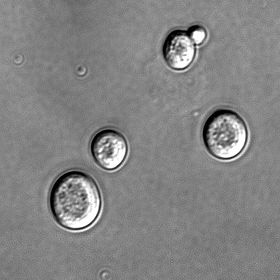|
|
Karling lecture 2009
Comparative genomics and the aftermath of ancient polyploidization
Ken Wolfe
Smurfit Institute of Genetics, Trinity College Dublin, Ireland

Now that we have so many genome sequences, we are becoming more interested in the differences between species than in the genes they hold in common. Comparative genomics is the science of using synteny and other methods to identify orthologous genes in different species, which is the starting point for identifying species-specific differences.
In my lab we work on the clade of fungi (Saccharomycotina) that includes the bakers' yeast Saccharomyces cerevisiae. More than a dozen Saccharomycotina genomes are available for comparison, and we are fortunate that they share high levels of synteny so we can align genomic regions and identify homologous genes relatively easily. However, one surprise has been the substantial number of loci in yeast genomes where the orthologs in different species have diverged enormously in sequence, to the point where their BLAST hits are marginal or non-existent. In these cases, it would be impossible to recognize the genes as orthologs without having synteny information.

We can also study the effect of ancient polyploidization (whole-genome duplication, WGD) on yeast genomes, because a single WGD event occurred in the common ancestor of six yeast genera. We can compare these genera to outgroups whose genomes are not duplicated. This reveals very rapid gene loss soon after WGD, loss of alternative copies in different species resulting in potential Dobzhansky-Muller incompatibilities, and the emergence of divergent functions in some of the retained duplicate gene pairs.
We have inferred the complete structure of the ancestral yeast genome as it existed just before WGD happened. Comparing this ancestor to the S. cerevisiae genome reveals the sets of genes that have been added to, and lost from, the genome during the most recent ~100 Myr of evolution on the lineage leading to modern S. cerevisiae. Many of the genes that have been added have functions associated with ethanol production, growth in hypoxic environments, or the uptake of alternative nutrient sources. This comparison also reveals a bizarre process of DNA erosion from the regions flanking the mating-type (MAT) locus in yeast, which we suggest is caused by errors during mating-type switching. |